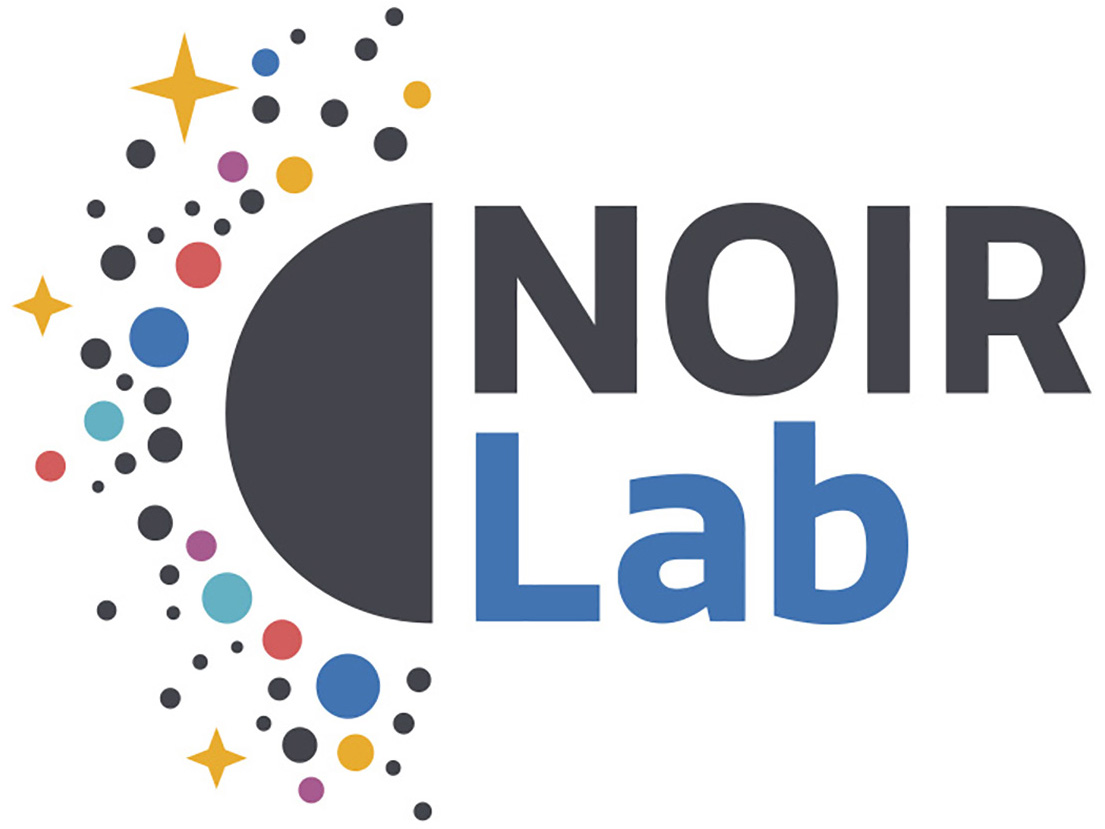Nighttime US/International Astronomy Gets a New Identity
This post is adapted from a NOIRLab press release:
 The National Science Foundation's (NSF’s) National Optical-Infrared Astronomy Research Laboratory, which in 2019 brought together NSF’s optical and infrared nighttime astronomy under one entity, will now go by the shortened name of NSF’s NOIRLab (no-WAH-lab), abbreviated from its longer formal name. NOIRLab is headquartered in Tucson, Arizona, and operates Kitt Peak National Observatory, the international Gemini Observatory, the Community Science and Data Center, Cerro Tololo Inter-American Observatory, and the operations of the Vera C. Rubin Observatory.
The National Science Foundation's (NSF’s) National Optical-Infrared Astronomy Research Laboratory, which in 2019 brought together NSF’s optical and infrared nighttime astronomy under one entity, will now go by the shortened name of NSF’s NOIRLab (no-WAH-lab), abbreviated from its longer formal name. NOIRLab is headquartered in Tucson, Arizona, and operates Kitt Peak National Observatory, the international Gemini Observatory, the Community Science and Data Center, Cerro Tololo Inter-American Observatory, and the operations of the Vera C. Rubin Observatory.
“Our new identity is an important step in the evolution of NOIRLab, our new organization which enables cutting-edge research in optical and infrared astronomy,” said Patrick McCarthy, NOIRLab Director. “Of course this combination of facilities and people is much bigger than just a name, but having an identity is a crucial aspect of moving forward.”
“NSF’s NOIRLab is the key to bringing together all major US and international optical-infrared astronomy partners into one organization,” said Dave Boboltz, Program Director within the Division of Astronomical Sciences at the National Science Foundation, which supports the enterprise. “NOIRLab will provide world-class facilities and staff expertise that will allow researchers to explore our universe like never before.”
The process of bringing together the NOIRLab facilities and programs into a single organization was launched in October 2019. Through its five programs NOIRLab serves as a focal point for community development of innovative scientific programs, the exchange of ideas, and creative development. NOIRLab’s infrastructure enables the astronomy community to advance humanity’s understanding of the universe by exploring significant areas of astrophysics, including dark energy and dark matter, galaxies and quasars, the Milky Way, exoplanets, and small bodies in our own solar system.

